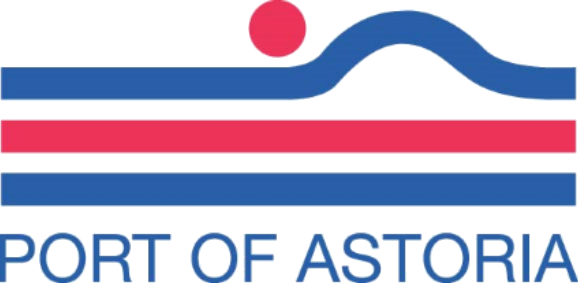Byproduct Recovery Center
The Byproduct Recovery Center project advanced through initial studies but was closed in July 2025 when continued funding and partner participation could not be secured.
Efforts for a Byproduct Recovery Center (BRC) began in May 2024 following an enforcement letter from the Oregon Department of Environmental Quality (DEQ) issued to the Port of Astoria, Bornstein Seafoods, and Da Yang Seafoods for stormwater violations on Pier 2.
The BRC was designed to support the seafood processing industry, improve regulatory compliance, and enhance environmental sustainability by directing all process wastewater to a single facility operating under one permit. Using Advanced Foam Separation™ (AFS™) technology, the facility would recover usable byproducts—such as fish oils and proteins—from seafood processing water. These materials could then be reused in composting and other applications.
In August 2024, the Port Commission approved SLR International to lead a Feasibility Study (FS) and contracted with Aqua-Terra Consultants (ATC) to conduct a Treatability Study (TS). This dual effort evaluated infrastructure requirements and the environmental performance of treatment technologies.
As part of this planning, the Port collaborated with Bornstein Seafoods, Da Yang Seafoods, and other local processors to explore how shared resource recovery could fit into the region’s industrial ecosystem. These discussions included a January 2025 industry roundtable hosted with the Center for Sustainable Infrastructure and supported by Business Oregon, where experts from Denmark provided insights into industrial symbiosis models. Public, industry, and regulatory input shaped how the BRC could transform seafood “wastewater” into valuable resources—an approach that positioned the Port as a potential regional leader in circular economy practices.
On April 15, 2025, SLR and ATC presented their Phase I findings to the Port Commission, confirming that the BRC concept was both technically feasible and environmentally effective.
Key findings included:
- AFS™ technology removed 70–90% of pollutants (oil, grease, bacteria) and reduced BOD (Biological Oxygen Demand) by 45–77%, depending on salinity and water quality.
- The system avoided toxic chemicals, making it more sustainable than traditional methods.
- Recovered solids were successfully composted with wood chips, though moisture levels require further refinement during pilot testing.
- A preliminary design projected 17 tanks and 12 towers to handle peak flows at full scale.
Phase II planning steps included pilot-scale testing with a continuous AFS™ system, developing geotechnical concepts, mapping pipeline routes, refining cost estimates, and beginning DEQ permitting.

